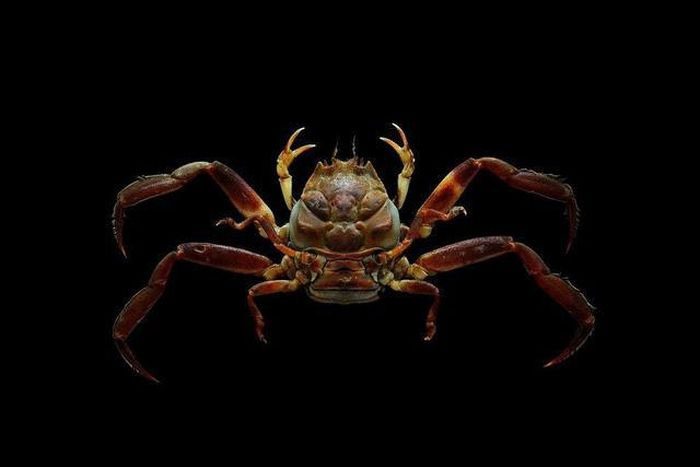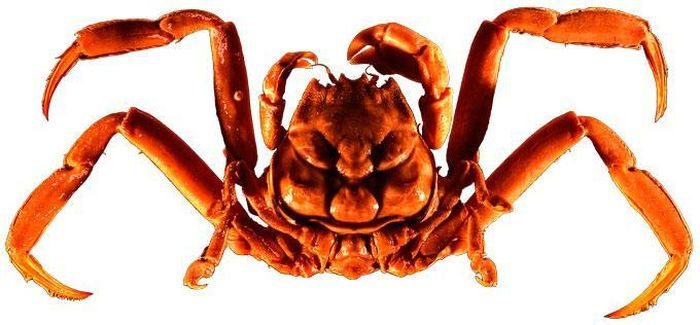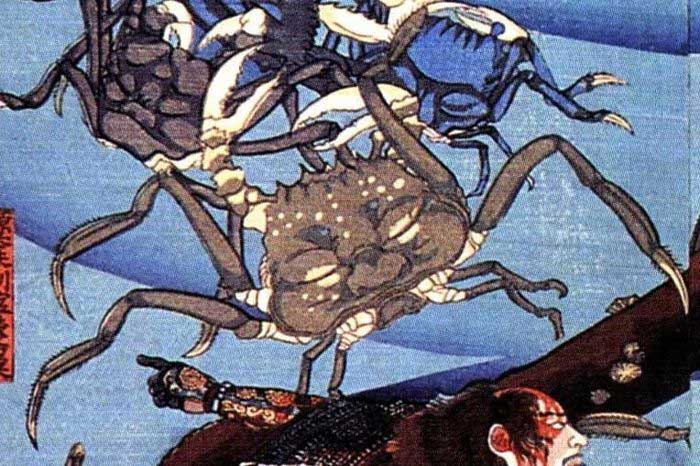Heikegani: The Samurai Crab of Japan Heikegani is a species of crab native to Japan. Its shell features patterns that resemble the face of an angry samurai, earning it the nickname – Samurai Crab.
Across the world, there are many peculiar animals with human-like faces, including the famous crustacean from Japan, known as the Heikegani crab (Heike crab), also referred to as “the human-faced crab.”
The scientific name of the Heikegani crab is Heikeopsis japonica, and it is a species indigenous to Japan. The name “human-faced crab” stems from the crab’s shell, which has shapes and patterns that closely resemble the angry faces of samurai warriors.

The Heikegani crab is scientifically named Heikeopsis japonica.
The Japanese consider these crabs to be the reincarnations of the samurai warriors from the Heike clan, a brave clan that unfortunately was defeated in the struggle for the throne in 1185. Historical records indicate that during the fierce Battle of Dan-no-ura in 1185, hundreds of samurai warriors perished at sea. Their bodies drifted and sank, buried beneath the sand on the ocean floor. Their souls are believed to inhabit the bodies of Heikegani crabs, with the angry faces bearing witness to their valiant deaths etched onto the shells of these crabs.
Legend has it that the Heikegani crabs are quite small, measuring only about 4 cm. Scientifically, the reason people perceive the crab’s shell as resembling a human face is due to a phenomenon called “pareidolia,” which is a type of “illusion.”

The Japanese view them as the reincarnation of the Heike clan samurai warriors.
Even today, when Japanese fishermen catch Heikegani crabs, they will release them back into the sea. This practice is seen as a way to show respect to the samurai warriors of the Heike clan.
The Minamoto clan encountered the Taira fleet at Shimonoseki, a small body of water separating Honshu and Kyūshū islands. After a series of archery exchanges, close combat began. The tide played a crucial role in the battle’s development, initially favoring the Taira, who had more experienced sailors, and later shifting to the Minamoto. The Minamoto’s advantage was significantly enhanced due to the betrayal of Taguchi Shigeyoshi, a general of the Taira who revealed the location of Emperor Antoku and the sacred treasures. The Minamoto then focused their attention on the emperor’s ship, quickly turning the tide in their favor.

Nowadays, when fishermen catch Heikegani crabs, they release them back into the sea.
The naval combat rules of that time stipulated not to shoot the boat crew but to target the samurai warriors, meaning the combatants. This was because the crew were fishermen, not soldiers; if they were killed, they wouldn’t be able to sail for the army, and the navy would not form. However, Yoshitsune, being from the East, did not think far ahead about the future of the navy and broke the old rule by targeting the crew first. The crew, unarmored, were severely injured by arrows and could no longer navigate the ships. Consequently, they fled in fear, leaving the Taira fleet unable to maneuver. The Taira generals exclaimed, “Yoshitsune is a coward!” as they perished.
Despite being explained from a scientific perspective, this “human-faced crab” remains a fascinating curiosity that attracts the interest of every visitor to Shimonoseki, Japan.





















































